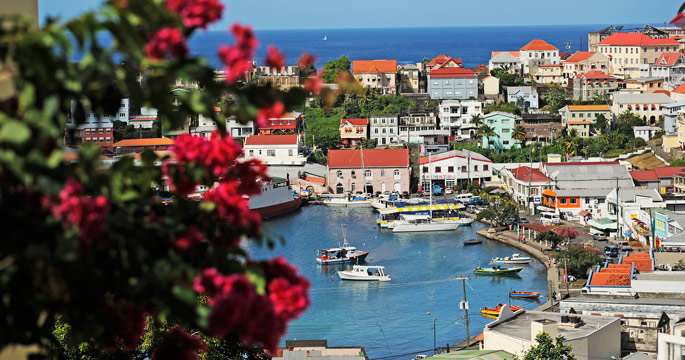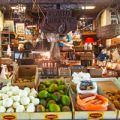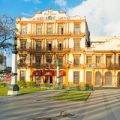Step Back in Time to Discover a Slice of Traditional Caribbean Culture
If beachfront high-rises, duty free malls and cruise ship mega- ports aren’t your thing, Grenada is for you. On this lush and laid- back island, the old ways linger. Trading sloops dock at stone wharfs overshadowed by a historic fort; locals gather to haggle at village markets; and nutmeg and cinnamon groves fill the air with fragrant scents. Get your taste of old-school Caribbean traditions and step back to a simpler time with these unique island activities.
A Free Market Encounter
Open-air markets were once the commercial and social hubs of Caribbean islands, and the tradition lives on in St. George’s Market Square. Gone are the days when ladies donned starched dresses and big hats, and even the vendors dressed up in their best. But the free market vibe hasn’t changed, as farmers, artisans and traders hawk their wares from open-air stalls or invite passers by to linger in the shade of the market’s roofed pavilions.
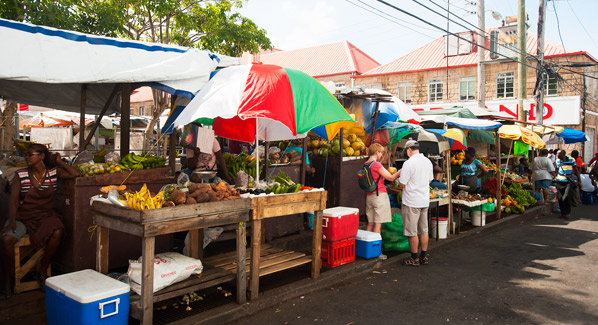
Fresh fruits and local spices are displayed on vendor’s tables at St. George’s Market Square. In addition to commerce, the square is a center for socializing and island gossip. Photo: Debbie Snow
Located at the foot of Young Street in St. George’s, the market is open every day except Sunday, but it’s Saturday morning that is the most vibrant. Locals gossip as they pick up charcoal for coal pots, and stock up on callaloo and root vegetables. A machete- wielding vendor slices the tops off coconuts and adds a straw for sipping the sweet nectar inside. Island visitors amble about, sampling both familiar and exotic fruits, and seeking out aromatic spices and attention getting hot sauces. Spices come right from the farm, unpackaged and unprocessed, or ground and bagged for easy packing. Not to be missed are the nutmeg syrups and jams, and cinnamon sticks the size of sausage.
A Growing Attraction
For an authentic dose of farm life on Grenada, head to Belmont Estate, which is an hour’s drive north from the capital to the parish of St. Patrick. This 400-acre working farm has been in operation since the 1660’s. In 1944, the property was bought by Norbert and Lyris Nyack, the first Grenadians of East Indian decent to own a plantation on the island. Today the farm is run by their grand niece, Shadel Nyack Compton. She has created an agri- tourism program that allows visitors to experience a working plantation while also supporting sustainable local agriculture.
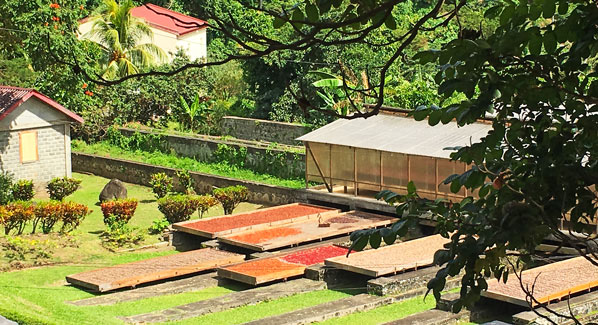
Grenada’s Belmonte Estate is a working farm and spice orchard that welcomes visitors and provides a glimpse of traditional island agricultural practices. Photo: Debbie Snow
The gardens are planted with local fruits and spices, and guests can tour the grounds, greenhouses, herb and vanilla gardens and an on-site goat dairy. After the garden tour visitors head to the onsite restaurant where a buffet of local dishes is served in traditional coal pots. Ladies assemble tables on the stairs below the restaurant to sell jams, spices and sauces. Another favorite is the cocoa tour, which begins with the harvest, sorting, fermentation and drying of cacao beans on wooden trays, and ends with hot chocolate drink. Most guests then head directly to the chocolate store to purchase bars of chocolate in various concentrations as well as brownies, cupcakes and other chocolate confections.
A Liquid Legacy
The majority of Grenada’s sugarcane crop is distilled into rum right on the island. And just about all of the rum production from the River Antoine Rum Distillery is slated for local consumption. One reason is because the alcohol content is too high to export and patrons of local rum shops have developed a taste for this potent elixir. Located in the northern parish of St. Patrick River Antoine is the oldest remaining water-powered distillery in the Caribbean, and the only one on the island that starts the process from fresh crushed cane rather than molasses.
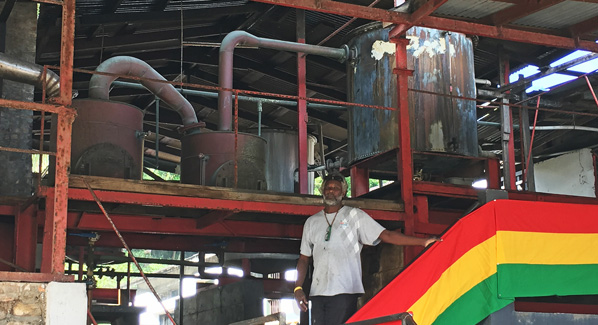
At the River Antoine Rum Distillery, a water wheel crushes the cane used to create a traditional style of extremely potent rum that is a favorite with island residents. Photo: Debbie Snow
A visit here is a step back in time, as the process and equipment hasn’t changed during the distillery’s 250 years in operation. A tour through the works gives a glimpse of what happens after the harvest, as the crushing, the heating, the distilling and the bottling are all done the same way as when the facility began operation in 1785. After the tour, the tasting takes place. Only the brave sample the first bottle, as just a whiff of its high level of alcohol makes eyes water. After a taste of this firewater, the less strong rums go down smooth. River Antoine produces a limited number of the light stuff, and even chocolate rum for those who wish to bring some home.

